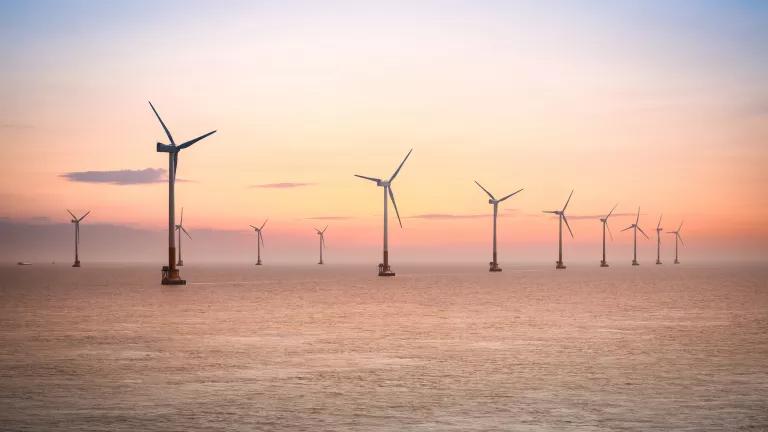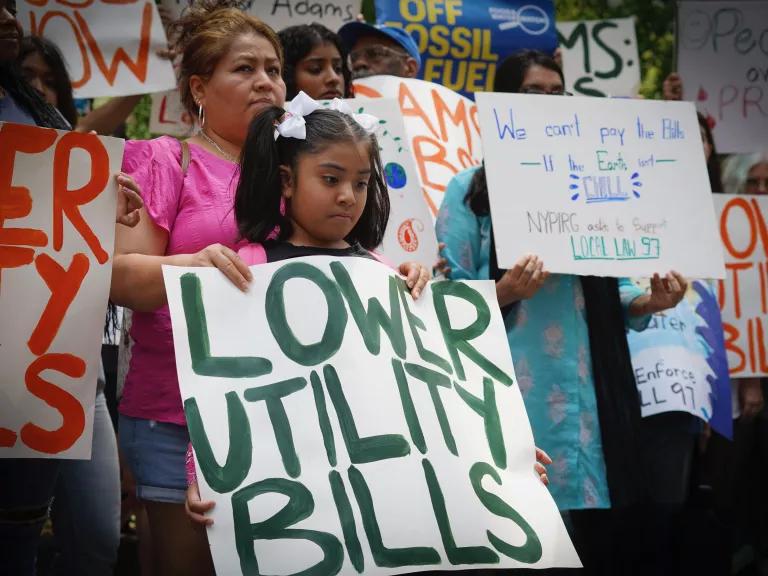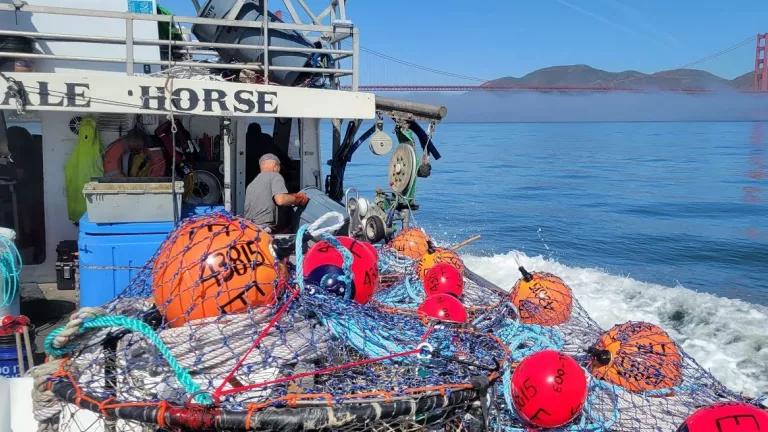Offshore Wind Plan Propels California’s Clean Energy Future
Offshore wind is a crucial part of California’s transition to a clean energy future, bringing significant benefits like cleaner air and economic opportunities.

The Golden State aims to develop 5 gigawatts (GW) of offshore wind capacity by 2030 and 25 GW by 2045 to help meet its zero-carbon energy goals and create a healthier and more resilient grid. California took a major step toward realizing these benefits with the California Energy Commission’s (CEC) draft strategic plan that outlines opportunities, challenges, and recommendations to make responsible and equitable offshore wind development a California reality.
Why offshore wind?
Offshore wind energy production is a promising tool to combat the climate crisis. It is abundant in the evening hours and in the winter, which means it can fill in gaps to complement the state’s solar and onshore wind renewable energy resources. Adding offshore wind to California’s clean energy mix will also:
- Reduce reliance on the gas power plants that ramp up after the sun goes down, eliminating greenhouse gas emissions and promising cleaner air.
- Contribute to our overall electricity supply, which we need to increase by 40 GW by 2030 and 115 GW by 2045 as we retire dirty power plants and replace fossil fuel combustion in buildings and cars with cleaner, more efficient electric options.
- Support workforce and economic development benefits, such as adding thousands of jobs to local economies as well as billions of dollars in wages, investments, and tax revenues across state, local, and federal levels.
The CEC's plan also presents an opportunity to advance energy equity by establishing project guidelines for offshore wind and port projects that support communities and avoid repeating injustices of previous extractive industries such as oil and gas.

A rally demanding New York mayor Eric Adams to fully implement Local Law 97, New York City’s Green New Deal for Buildings in July 2023
To make this happen, we need to invest in smart and equitable planning that uplifts and incorporates the expertise of Tribal Nations and local communities living near offshore wind development. Such planning could also protect Tribal Nations and communities through formal agreements that identify Tribal and local community rights as well as specific benefits that must accrue to the community.
What to look out for?
As we advance this work it is equally important to ensure this critical wind resource is responsibly developed to protect the ocean’s natural resources. The waters off the California coast support an array of marine life—including protected whales and seabirds, provide fertile commercial fishing grounds, and are important for Indigenous Peoples, who have had reciprocal relationships with the ocean since time immemorial. As NRDC and other environmental groups have commented, responsible offshore wind development:
- Avoids, minimizes, mitigates, and monitors adverse impacts on wildlife and habitats.
- Minimizes negative impacts on other ocean uses.
- Meaningfully engages state and local governments and stakeholders from the outset.
- Uses the best available scientific and technological data to ensure science-based and stakeholder-informed decision making.
As with all energy resources, it is also important to follow the lead of Tribal Nations and local communities who have deep knowledge of the natural world. While tribes may hold varying views of offshore wind, there are foundational tenets that must be established to ensure that the offshore wind industry develops responsibly.
This involves respecting and acting on the state’s recognition of Tribal Energy Sovereignty, creating inclusive processes that ensure Tribal Nations and local impacted communities are central in offshore wind energy planning and implementation efforts, as well as developing co-management or co-ownership agreements for offshore wind and related transmission development on Indigenous lands. Offshore wind projects, including associated port and transmission line expansions, must also bring benefits to communities and avoid additional burdens such as increased air pollution.
Is this possible?
NRDC has long been a proponent of offshore wind. While the offshore wind industry is nascent on the West Coast, we've recently seen what responsibly developing offshore wind resources can look like with the launch of the South Fork wind project in New York. This project promises to bring enough clean electricity to power approximately 70,000 Long Island homes and is expected to reduce carbon emissions equivalent to the pollution of 60,000 gas-powered cars. In addition to bringing benefits to New Yorkers, the project was also built with key protections for the imperiled North Atlantic right whale.

A North Atlantic right whale with her calf off the coast of St. Catherine's Island, Georgia
We now look to build on this effort, ensuring that west coast offshore wind projects are designed to respect our valuable natural resources, honor tribal sovereignty, and incorporate tribal and local community expertise and priorities, all while providing a strong foundation for the sector’s future.
Where to next?
Now is the perfect time to put the pieces in place for a thriving California offshore wind industry. The Inflation Reduction Act offers an unprecedented amount of capital for renewable energy development. This includes multiple incentives that offshore wind developers can access, especially for projects that meet domestic content requirements and/or are sited in communities with many fossil fuel or unemployed workers. These bonus adders support strong labor requirements, the building of a local clean energy manufacturing economy, and ensuring that communities most burdened by fossil fuel production and impacted by a shifting energy system also benefit from the clean energy transition.
We must move with all due speed to develop California offshore wind to address the climate crisis. Even so, we can still address the needs of local communities and valuable natural resources with smart development and mitigation strategies. Through thoughtful, inclusive, and effective collaboration as well as investment in new technologies, scientific research, and critical monitoring, we can put California on the path toward realizing the many anticipated benefits while meeting the needs of those most affected by offshore wind and port development.




